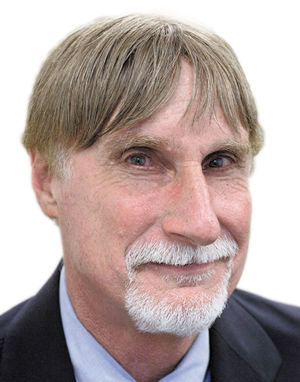A dose of reality for the pessimists among us
Published April 11, 2018
The second commentary I ever wrote for the Jewish Light was titled “Our Kvetching Culture,” in which I argued that we (humanity, including Americans) have never had it so good, yet never felt so bad.
That was five years ago. This contradiction has only deepened since, with the human condition continuing to improve while our psyches have continued to spiral downward. In America alone, the arrival of Donald Trump has produced a sense of gloom and doom on the part of at least half the citizenry almost unparalleled in our history, never mind the Civil War and two world wars.
Although we all have our aches and pains and trials and tribulations, some more than others, we continue to kvetch more than we should. Trump tweets aside, “2017 Was the Best Year in History.” That was not the president’s press secretary talking but the headline on a column written by Never-Trumper Nicholas Kristof in the Jan. 7 New York Times, who managed to overcome Trump Derangement Syndrome to get his facts straight.
Kristof is not alone in his optimism. He cites Steven Pinker’s latest book, “Enlightenment Now,” in which the Harvard scholar produced tons of data to show that on almost every dimension of progress imaginable — from war to crime, health and life expectancy to quality of life, the environment to the economy, and democracy to equal rights — the metrics are moving in the right direction, not only over the sweep of human history but more recently. (Interestingly, the one category of violence which is trending the wrong way is suicide.)
In an essay in the Wall Street Journal in February, Pinker noted that while in 1988, there were 23 wars raging, “today, it’s 12 wars. The number of nuclear weapons has fallen from 60,780 to 10,325. In 1988, the world had just 45 democracies, embracing 2 billion people; today it has 103, embracing 4.1 billion. That year saw 46 oil spills; 2016, just five. And 37 percent of the population lived in extreme poverty, barely able to feed themselves, compared with 9.6 percent today.”
I attended professor Pinker’s book talk at the St. Louis County Library in March, and heard him rattle off dozens more statistics that you would think would make the average person more upbeat. Yet, as he told the audience, the pessimists far outnumber the optimists.
I have long noticed the tendency for people to lean more toward Cassandra than Pollyanna. Young people especially are inclined to see the future of society as bleak. For many years, I have visited area high schools and colleges and asked students two questions.
First: “How many of you think the world (or the U.S.) will be a better place 50 years from now?”
Second: “How many of you think your personal, individual life will be better 50 years from now?”
Almost invariably — no matter whether it was a rich suburban school or a poor inner city school, a public or private institution — a majority of students answered the first question negatively, whereas a majority would reply to the second question in the affirmative, a disconnect suggesting a certain cynicism about the future. Pinker says this is a common phenomenon called the Optimism Gap.
What accounts for all the pessimism?
Here, too, Pinker offers interesting observations backed by evidence. Part of the problem, he says, are intellectuals, whether of the left or the right, who are notoriously critical about things.
He reserves some of his harshest judgment for media elites, both local newscasters who follow the “if it bleeds, it leads” imperative of attracting viewers with the most gruesome stories of the day, as well as the major national agenda-setters, such as The New York Times, who have their own negativity biases.
In “Enlightenment Now,” Pinker refers to a content analysis of every article published in that newspaper from 1945 to 2005, which confirmed that “the impression that the news has become more negative over time is real. The New York Times got steadily more morose from the early 1960s to the early 1970s, lightened up a bit (but just a bit) in the 1980s and 1990s, and then sank into a progressively worse mood in the first decade of the new century.”
The Times’ funk has only deepened in the Trump era.
Writer Gregg Easterbrook attributes the somber mood simply to the fact that optimism “has stopped being respectable.” It is “uncool.” (“When Did Optimism Become Uncool?” New York Times, May 15, 2016).
To me, it is a combination of gross ignorance (the failure to understand the positive reality that Pinker documents) and unrealistic expectations (the growth of an entitlement culture, based in part on the very progress we seem to take for granted, leading to rising, as yet unfulfilled, demands).
At this point, before readers admonish me for my Panglossian outlook, I need to acknowledge that, of course, we still have serious problems in and beyond America: an epidemic of school shootings, an opioid drug crisis, some setbacks in the ongoing spread of democracy, the bottom billion of human beings still living in dire poverty, and the ever present threat of nuclear war posed by rogue states or nonstates, among other concerns.
I know some people are hurting, and I do not mean to dismiss their misfortune.
Still, I would submit that we should try to keep things in perspective. Any time you start feeling sorry for yourself and feel unduly stressed, or feel others’ pain, treat yourself to a screening of “The Darkest Hour” to see how some folks handled adversity in the old days.















